Roman Architecture – From the Colosseum to Aqueducts
Roman architecture is one of the most influential forms of architecture that has ever existed. The sheer extent of the Roman Empire ensured that this form of architecture spread around the world, and this article will examine how Roman architecture developed from the Ancient Greeks while examining some of the major advancements and structures that Roman architecture was able to produce. Keep reading to learn more!
A Look at Roman Architecture
Roman architecture is often defined as the architecture that was developed between the time of the Roman Republic and the beginnings of the Byzantine Empire. This means that Roman architecture arose in about 509 BCE and ended in the 4th century CE. However, simply because the technical era of Roman architecture came to end in the 4th century, the architectural style did not die. In addition, Roman architecture is not exclusive to Rome buildings, as the Roman Empire stretched across the Old World.
This architecture would go on to have an enormous effect on architecture in general for centuries to come.
Greek vs. Roman Architecture
Ancient Greek architecture, much like practically everything created by Ancient Greek culture, has had a major influence on the world. One of the nations most influenced by this architectural style was, of course, the Romans. This Greek style was predominantly based on a post-and-lintel architectural system in which columns were used to hold up various lintel structures. This required the use of numerous columns used throughout a structure.
When a building is filled with columns, there isn’t much space for anything else.
This meant that Ancient Greek buildings may have been impressive architectural feats from the outside, but they lacked the kind of practicality that would come from later Roman advancements. It was this lack of overall practicality in many Greek structures that led the Romans to attempt, and succeed, in improving on the design decisions innovated by the Ancient Greeks.
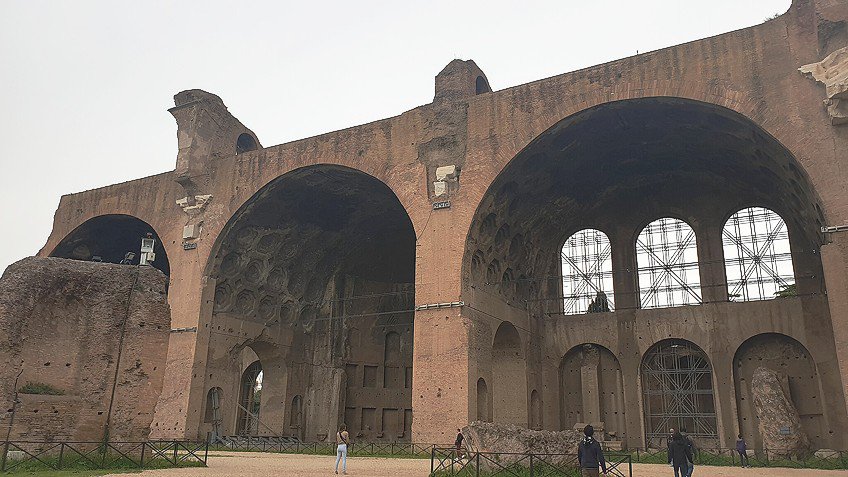
Before the Romans, many cultures, including the Ancient Greeks, designed their architecture to be externally appealing. It looked gorgeous and impressive from the outside, but the inside was a different story entirely. In addition, the Greeks focused much of their attention on building architectural marvels that also doubled as religious structures of some kind. The same is not true of the Romans. The Romans wanted to develop secular buildings that were beautiful without necessarily being dedicated to the gods. Of course, their temples were also extravagant, but it was not their temples alone that received this kind of attention.
There are many architectural innovations that the Romans are often credited with creating, but they did not necessarily create many of these innovations, they simply improved on them.
For instance, the Greeks did use arches and domes, but it was the Romans who decided to adopt these architectural innovations to produce something entirely new. Roman arches, domes, and concrete were some of the biggest areas that the Romans used to expand their culture into one of the biggest empires that the world has ever seen. The Romans used concrete to develop far stronger, more intricate structures, and they used arches to expand the size of their buildings without needing to overuse columns as had been a necessity in the past.

This would ultimately lead to the Romans developing sturdier and often more impressive structures that have been able to withstand the test of time, such as the Pantheon, which is a prominent Rome building that will be discussed in more detail later. This does not mean that the Greek influence was not immensely important and it may not actually be all that useful to frame it as “Greek vs. Roman architecture,” but that is the way we often want to think. The Romans would not have been able to construct the various architectural marvels that they created had it not been for the innovations that Ancient Greek culture left them.
These two forms of architecture need to be viewed together to truly understand where Roman art and architecture often came from in the first place.
The Major Innovations of Roman Architecture
The Romans, as has been explored above, may not have created all the innovations that they are sometimes credited with, but they certainly did perfect many of these architectural necessities. The Romans took what they had learned from the Ancient Greeks and the Etruscans, and they developed an architectural system that led to structures that could withstand the test of time while simultaneously influencing numerous artists and architects through the centuries.
Concrete
It may not appear immediately impressive that concrete was one of the major construction and architectural innovations that the Romans brought to the world, but it is. Roman concrete, also known as opus caementicium, is a kind of cement that has an aggregate mixed in with it. This innovation allowed for the development of much sturdier buildings because concrete is capable of retaining whatever shape you cast it into, and it could set underwater.
The use of concrete allowed the Romans to produce far more elaborate constructions than anything that had come before.
Furthermore, the fact that concrete can be used underwater without eroding, allowed for the development of other innovations, such as the creation of more complex bridge structures. In fact, one of the most interesting things that were discovered about this concrete was that when it used lime clasts, it was able to effectively reseal any cracks on its own when exposed to water because of calcium carbonate buildup. This meant that Roman concrete could be self-repairing.

It’s no wonder then that the Romans realized that this newly produced substance was superior to something like marble as it allowed for easier sculpting and decorating, and it could be produced locally and was thereby cost-effective. This development ultimately paved the way for the Roman architectural revolution, which is also known as the concrete revolution, which would radically alter and expand Roman life. Concrete was a major factor that led to the growth of the Roman Empire, and it allowed for the development of massive cities that used intricate infrastructure methods.
This ultimately leads to the next of their major innovations, and it also leads to a question: who invented the arches? Was it the Romans?
True Arches
It is commonly the Romans who are associated with Roman arches, as the name may suggest, but who really invented the arches? We do not actually know who exactly invented the arches, but they do appear to have been used by the Ancient Greeks, Etruscans, and others, but there is a reason that we associate arches with Romans. We have this association because it was the Romans who more widely adopted the arch as an integral aspect of their architecture in general.
This means that the Romans did not invent the arches, but they did perfect them.
These new Roman arches allowed for a lack of reliance on columns in general, and it allowed for the development and proliferation of other structures in Roman society such as bridges and aqueducts. These Roman arches were also true arches. This meant that their arches were constructed out of carefully cut stone that was ultimately supported by a central keystone that stopped the entire structure from collapsing. This seemingly simple architectural design would become an integral part of Roman architecture as it almost entirely replaced the old post-and-lintel system favored by the Ancient Greeks.
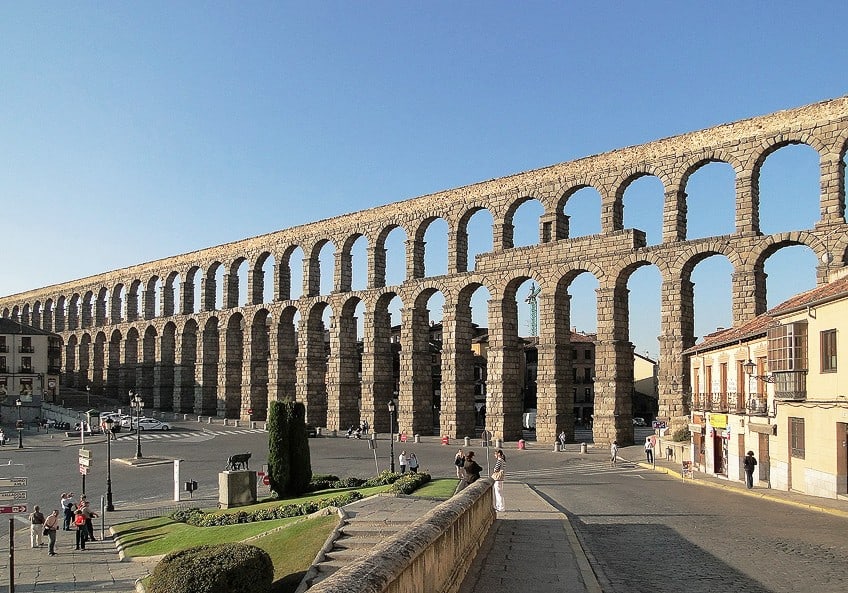
Roman arches allowed buildings to have far larger interiors that were unobstructed by columns, and this allowed for more intricate decoration that led Roman buildings to have far more internal ornamentation than prior architectural styles. In addition, Roman arches were used in far more than simply the construction of standard buildings, they also built arches that stood on their own. These triumphal arches, like the Arch of Constantine, were used to signify victories that the Roman people had attained. It is clear from this that Roman arches became an important part of Roman life in general.
They were used extensively and for a variety of purposes. They also allowed for some of the other innovations that will be discussed below.
Road Building
Roman arches may have been an architectural marvel, but one of the greatest strengths that the Ancient Roman civilization was able to produce was its vast infrastructure. The use of the first real roads allowed the Roman Empire to expand far beyond its original borders. It allowed for easier movement and the expansion of trade.
Some of the first major roads were developed by Romans for this purpose.
One of the most famous of these vast road structures is the Appian Way. This road was the first major paved road, and it was first built in the middle of the 4th century BCE. This road connected Brindisi to Rome and was impressive in its own right, such as with a 1 km tunnel that was required to connect this road to an important Roman naval base.
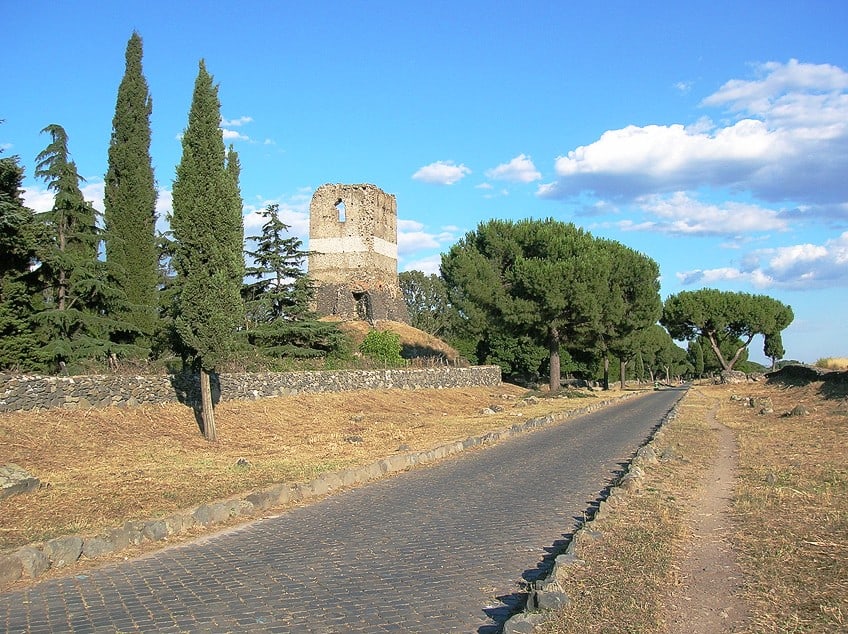
Roads were considered, by the Romans, to be an integral part of their expansion efforts, and because of this we have a modern expression: “All roads lead to Rome.” The Roman development of road structures allowed for their expansion and their fame to this day. In addition to roads, other infrastructure projects developed during the time of the Ancient Romans.
Aqueducts
Aqueducts are large canal systems that allowed water to be transported to places that did not otherwise have natural water sources. These structures used Roman arches to move the water and to ensure that the aqueducts would remain sturdy. In fact, some of these aqueducts were so sturdy that they still exist to this day, such as the Pont du Gard. The Pont du Gard actually shows how advanced these structures were because that lengthy structure does not actually use any mortar.
The stones were cut so precisely and connected via keystones that the aqueduct has survived, since the time of the Ancient Romans, until now.
Aqueducts were integral to the development of Rome itself as an international powerhouse. Multiple major aqueducts flowed into the city, and this allowed for a far healthier, cleaner city that became a point of pride for this growing Empire. Alongside this aqueduct system, the Romans also developed intricate sewer systems that furthered the cleanliness of Rome by transporting waste far from the city. The movement of water is important for a growing civilization and the Romans perfected it.
Bridge Building
The final innovation that will be discussed is the Roman development of bridge technology. Once again, the Romans made consistent use of arches to allow for bridges to span far greater distances. The ability to cross over large bodies of water has long been a concern for humans, and it was the Romans who were able to build underwater and create these sturdy bridges.

Roman bridges, because of their use of concrete and arches, would serve as load-bearing structures the likes of which had never been seen before. Roman architectural developments such as these allowed for the massive expansion of the Roman Empire. The need for strong infrastructure is often undervalued, but being able to transport anything anywhere it needs to go is one of the most important things a civilization needs. So, who actually created these innovations in the first place?
The Architects of Roman Architecture
The time of Ancient Rome was, as one may suspect by the name, a very long time ago, and because of this, it can be difficult to know the specifics of the architects who lived during that time. There was often comparatively weak record-keeping, in juxtaposition with all the other advancements that Roman culture brought to the world, and so there are only a few architects who are really known. The most famous, and potentially most important, architect was Marcus Vitruvius Pollio. He is often better known by the mononym Vitruvius. Vitruvius was a famous architect who served as the chief architect of Julius Caesar.
However, it is not the buildings that he designed that have rendered his work so important, but rather his theoretical work.
Vitruvius worked on a book between 30-20 BCE that was called De Architectura. This text was comprised of his theories, sketches, and architectural observations as he traveled around the known world. He is principally known as the man who developed the idea that all buildings needed to have three main components: strength, utility, and beauty.

Furthermore, he wrote extensively on the primary architectural orders, which were the Doric, Ionic, and Corinthian Orders. To those unaware, these are, effectively, styles of column design, and as the column was an integral aspect of Roman architecture, Vitruvius’s work on them is of particular interest.
Doric Order
The Doric Order of Roman columns is the kind of columns that are built to be thicker and sturdier. In addition, they are typically plain and unadorned. The capital, or top, of these columns, was very plain and ended in a circular formation against the more detailed entablature above it.
These columns were generally used for the lowest floors of a building because they were seen as more masculine and capable of holding more overall weight.
Ionic Order
The Ionic Order of Roman columns is the kind of columns that are thinner and more elegant in their design. They also use a volute structure at their capital. These are spiral or scroll-like formations that crown the column. The Ionic Order of columns were considered to be more feminine and so was used higher in structures because they were seen as being capable of holding less weight.

Corinthian Order
The Corinthian Order is quite possibly the most famous of them all. These columns are fundamentally ornate in their design and involve the use of highly detailed ornamentation at their capital.
They are slender flute columns and were, much like the Ionic Order, considered to be more feminine than the thicker, load-bearing Doric Order.
The Greatest Roman Structures
The Romans built some of the most influential structures that have ever been constructed. In the following section, we will look at just five of those structures. These are not necessarily the most influential Roman buildings, but they are some of the most famous and most influential. Many Ancient Roman structures do not exist in their original state any longer as time does eventually come for all structures when they are not properly maintained. Many of these old buildings were either neglected or actively paved over and replaced over the centuries.

Only two of the following five examples of famous Roman buildings have retained some level of true maintenance over the years, and the first is actually in complete ruin. So, keep reading to learn about five of these ancient buildings that were constructed using some of the earliest and most innovative construction techniques of the ancient world. Some of these are far more well-known than others, but maybe you discover a few things along the way.
The Golden House, or Domus Aurea (64 – 68 CE)
| Architect | Celer and Severus (1st century CE) |
| Date Constructed | 64 – 68 CE |
| Function | Palace |
| Location | Rome, Italy |
The Domus Aurea, which is also known as the Golden House, was a grand palace complex that has since fallen into ruin. This particular complex was built under the watchful, and wrathful, eyes of Emperor Nero. This is one of the most famous Roman buildings because of the immense influence it had on a number of artists after it was rediscovered. The palace complex was located on top of Oppian Hill, and it overlooked the city. This Roman structure was constructed after the great fire in 64 CE which destroyed much of Rome. Nero used the fire as an opportunity to seize as much land as he could so that he could build this opulent Roman building in his own honor.
The complex was built between 64-68 CE, and for a structure of this size, that was a remarkably fast time.
However, judging by the reputation that Nero managed to attain in his lifetime, perhaps it makes sense that the builders moved quickly. This palace complex was filled with art and statues, but in the years after his rule, the whole place came to be seen as an embarrassment. This famous Roman building was seen as overly decadent and extravagant, and many of the valuables were stripped out of the structure shortly after it was built. Then, in an attempt to do away with the building entirely, it was filled in and the location was built over, and the palace was seemingly forgotten. The Baths of Trajan and the Temple of Venus and Roma were actually built over it.
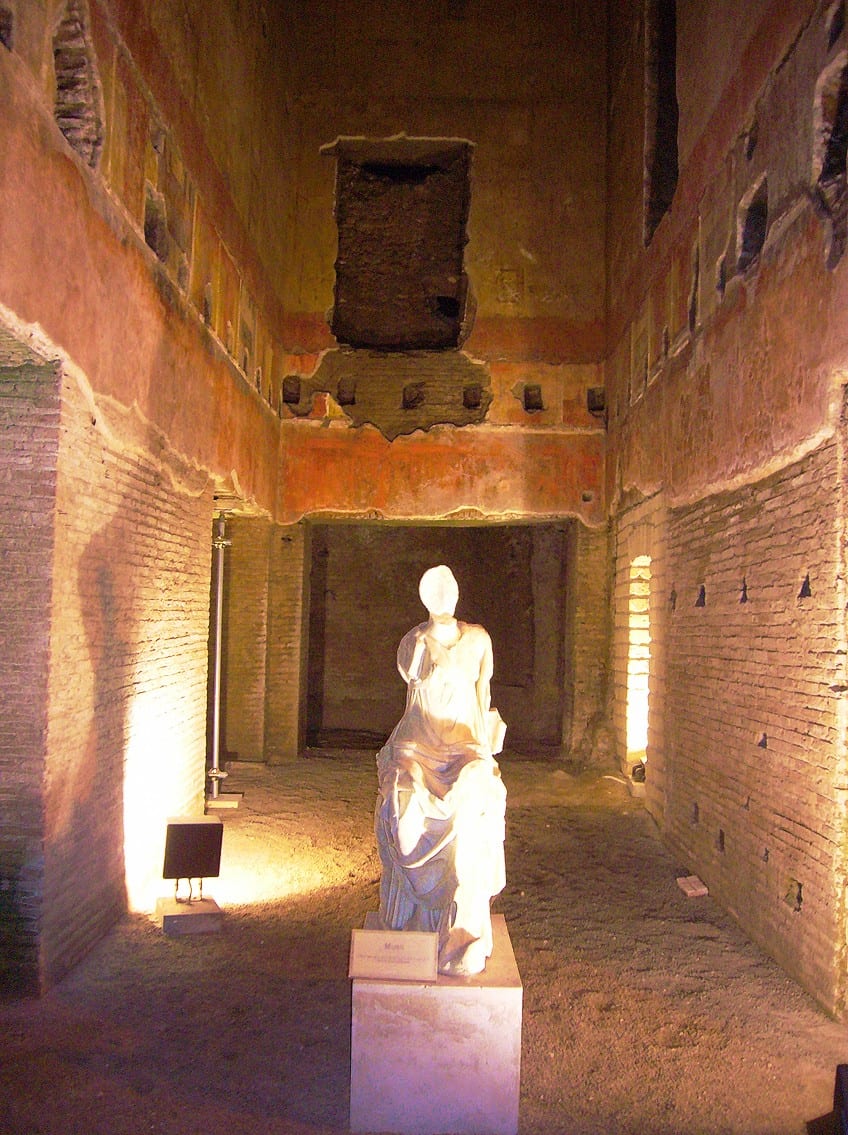
This palace was eventually rediscovered by mistake after someone fell into the ruins. Once the ruins had been discovered, various famous individuals traveled there to see Roman art and architecture that was on display. Artists like Raphael and Michelangelo visited the ruins and were inspired by what they saw, and many of these visitors also graffitied their signatures on the ruins. There are signatures of historical figures like Casanova and the Marquis de Sade in those ruins.
These ruins represented a golden age of Roman’s art and architecture, a golden age that would inspire many for generations to come.
Colosseum (70/72 – 80 CE)
| Architect | Unknown |
| Date Constructed | 70/72 – 80 CE |
| Function | Amphitheatre |
| Location | Rome, Italy |
The Colosseum is probably one of the Roman structures that need no real introduction. The Colosseum is such a famous Rome building that it has practically come to fulfill a similar role as the Eiffel Tower does for Paris. One cannot imagine the ancient city of Rome without also imagining the Colosseum. This colossal roman building is the largest amphitheater ever built, and it could hold between 50-80,000 spectators at a time. Furthermore, it was built right in the middle of Rome for all to see and visit. One could not escape the majesty of this gargantuan arena built from limestone, volcanic rock, and brick-faced concrete that was first built by Emperor Vespasian, and later completed by his heir Titus.
In addition, there were modifications made during the time of Domitian.
The Colosseum would come to serve many functions over the course of its existence. This amphitheater was built for the purpose of various public events and is likely best known as the site of blood sports like gladiatorial conflict. However, the Colosseum was used for far more than gladiators fighting it out. It was also used for hunts, dramatic performances, executions, re-enactments of various battles, and even as the site for the depiction of mock sea battles. Although that last use was not particularly common and didn’t last very long.
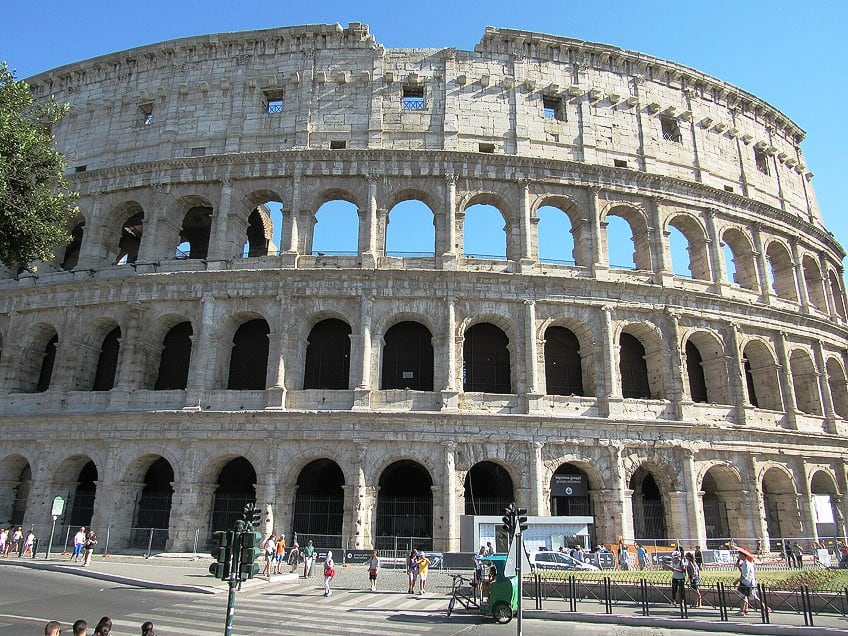
The Colosseum is by far one of the most famous Roman buildings, but it was not always necessarily treated with the reverence we now give it, because, after the end of its official use in the early medieval era, it was used by a variety of others for numerous other reasons. It was used as living quarters, workshops, and a number of religious uses, and it was even a fortress. In addition, a lot of the original structure was stolen piece by piece over the generations.
Pantheon (113 – 126 CE)
| Architect | Unknown |
| Date Constructed | 113 – 126 CE |
| Function | Temple/church |
| Location | Rome, Italy |
The Pantheon is another grand Roman structure which exemplifies the Roman’s art and architecture. The original structure was a temple of some description that was built during the reign of Augustus, and so it was built somewhere between 27 BCE and 14 CE. However, it was later rebuilt by Hadrian. He dedicated the site in 126 CE, but the actual date of construction is not entirely known. When Hadrian rebuilt this iconic Roman building, he did so without leaving any real records of the new architect.
Hadrian himself was an architect, but we do not know whether he necessarily had a hand in this particular Roman structure because he retained the original inscription from the first temple where the Pantheon now stands.
The reason this structure is considered one of the most iconic and an exemplification of Roman art and architecture is because of the influence of its design on subsequent architects. The Pantheon is comprised of a cylindrical design using Corinthian columns and, most impressively, a concrete dome that stretches 43 m (or 142 ft) high. This is especially impressive, and somewhat terrifying because it is the largest concrete dome, which is also unreinforced, in the entire world.

Many have come to observe and learn from the Pantheon, and it has remained one of the best-preserved examples of a Roman building. One of the reasons it has remained so well-preserved is that it has been in constant use since it was created. It first existed as a temple, but since 609 CE, it has served as a Catholic church called the Basilica di Santa Maria ad Martyres. It is also known, to more English-speaking people, as the Basilica of St. Mary and the Martyrs.
So, the Pantheon will likely continue to stand as long as it is watched over, and as long as it stands, it will continue to influence artists and architects around the world.
Temple of Venus and Roma (121 – 141 CE)
| Architect | Hadrian (76 – 138) |
| Date Constructed | 121 – 141 CE |
| Function | Temple |
| Location | Rome, Italy |
The Temple of Venus and Roma was, as the name might suggest, a temple dedicated to the two gods Venus and Roma. However, this temple was believed to be the largest temple in Ancient Rome, and while it does not exist in its current form any longer, the ruins still remain. The Temple of Venus and Roma was also a structure that was constructed atop the ruins of Nero’s Domus Aurea and so it was perched on Velian Hill where it could overlook the city. The two gods that this Ancient Roman structure is dedicated to are the representations of good fortune and the very embodiment of Rome itself, respectively. This grand temple was started under Emperor Hadrian in 121 CE, and it was also designed by him.
He ended up inaugurating the temple in 135 CE even though this Roman building was not yet completed at the time. It was ultimately completed in 141 under Antoninus Pius.
An interesting fact about this Roman structure is that because it was designed by Hadrian, it was a particularly difficult design to criticize. You don’t exactly want to criticize the work of the Emperor himself, after all. However, that is exactly what one of Hadrian’s architects did. An architect named Apollodorus made a few negative comments about the design and then, as you may expect, he was banished and later executed. Why take the risk and criticize a dictator’s building? Who knows!?

The site did not survive through the ages though, and a fire in 307 necessitated a restoration. This restoration was enacted under Emperor Maxentius. Nowadays, the ancient structure is used for several public addresses, such as the Pope’s public appearances before his following. The old temple is situated on higher ground with a good overview of the city, so it works well as an assembly point in the modern day.
Tower of Hercules (1st Century CE)
| Architect | Gaius Sevius Lupus (1st century CE) |
| Date Constructed | 1st century CE |
| Function | Lighthouse |
| Location | A Coruña, Galicia, Spain |
The Tower of Hercules is a 57 m (or 187 ft) tall lighthouse that dates all the way back to the 1st century CE. This is why it is so impressive that this lighthouse is still standing, but not only is it still standing, but it’s also still operating as a lighthouse. This means that the Tower of Hercules is the oldest extant lighthouse that we know of. Unlike the other Roman structures we have examined in this article, this lighthouse is not found in Rome or even in Italy. The Ancient Roman Empire was a civilization that spanned across the Old World, and so there are examples of the Roman’s art and architecture in places that may otherwise be considered foreign to Rome.
In this case, the Tower of Hercules is situated on a peninsula in the city of A Coruña, Galicia. This is in Spain.
In addition, while this Roman structure was, according to the dedication, designed by Gaius Sevius Lupus, the lighthouse is based on the original plans of the Lighthouse of Alexandria, which is one of the Seven Wonders of the Ancient World. So, there would have been significant influence from the architect of that magnificent structure, Sostratus of Cnidus.
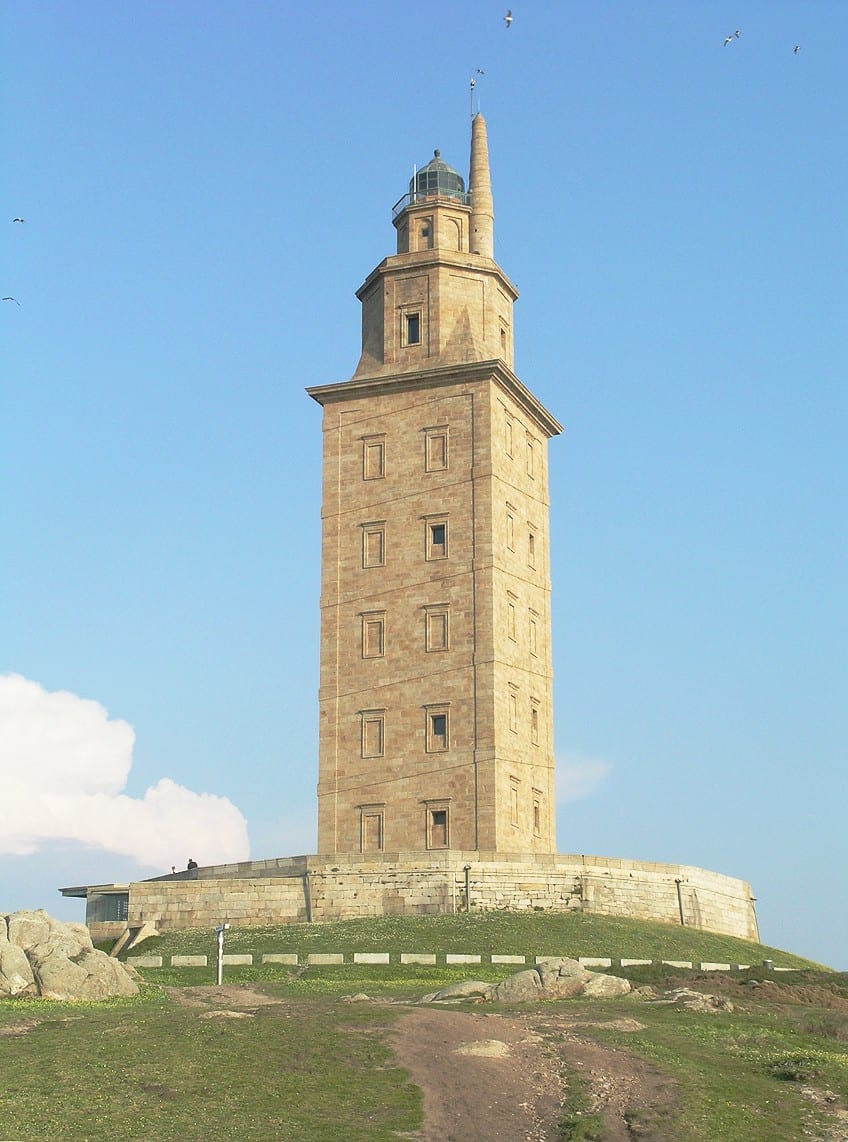
This lighthouse was possibly built under Emperor Trajan, but we cannot be certain of that. However, we do know that it was dedicated to Mars, the Roman God of War. Furthermore, this ancient lighthouse was renovated in 1791 and you can visit it if you’re ever in town. It is a gorgeous example of Ancient Roman architecture and well worth a visit.
The Ancient Roman civilization may have taken a lot from the Etruscan and Greek traditions before it, but this grand civilization developed and improved on the architectural techniques of prior cultures. This development allowed the Romans to build intricate structures that were far larger and more stable than those that had come before. Many Ancient Roman structures still stand, and that should be a testament to their incredible longevity.
Frequently Asked Questions
What Is the Greek Influence on Roman Architecture?
It is easy to simplify the view of these two cultures as a Greek vs. Roman architecture rivalry of sorts. However, this is not accurate as the Romans took heavy influence from the Greeks, such as with the use of arches, but the Romans developed what the Greeks had created and expanded on what could be done with architecture in general.
What Are the Major Developments of Roman Architecture?
The Romans developed and expanded on Greek architecture by improving on structures such as arches, but it was really through some of the other developments that they have become so influential. The development of concrete, aqueducts, bridge building, and advanced road-making allowed the Roman Empire to expand its infrastructure and its reach.
Who Are the Major Architects of Roman Architecture?
Sadly, few architects are really known from the Ancient Roman period. The most famous Roman architect was likely Vitruvius, who served as the chief architect of Julius Caesar. He developed architecture from a more theoretical perspective and discussed the various orders of Roman column architecture.
Justin van Huyssteen is a writer, academic, and educator from Cape Town, South Africa. He holds a master’s degree in Theory of Literature. His primary focus in this field is the analysis of artistic objects through a number of theoretical lenses. His predominant theoretical areas of interest include narratology and critical theory in general, with a particular focus on animal studies. Other than academia, he is a novelist, game reviewer, and freelance writer. Justin’s preferred architectural movements include the more modern and postmodern types of architecture, such as Bauhaus, Art Nouveau, Art Deco, Brutalist, and Futurist varieties like sustainable architecture. Justin is working for artfilemagazine as an author and content writer since 2022. He is responsible for all blog posts about architecture.
Learn more about Justin van Huyssteen and about us.
Cite this Article
Justin, van Huyssteen, “Roman Architecture – From the Colosseum to Aqueducts.” artfilemagazine – Your Online Art Source. October 12, 2023. URL: https://artfilemagazine.com/roman-architecture/
van Huyssteen, J. (2023, 12 October). Roman Architecture – From the Colosseum to Aqueducts. artfilemagazine – Your Online Art Source. https://artfilemagazine.com/roman-architecture/
van Huyssteen, Justin. “Roman Architecture – From the Colosseum to Aqueducts.” artfilemagazine – Your Online Art Source, October 12, 2023. https://artfilemagazine.com/roman-architecture/.



